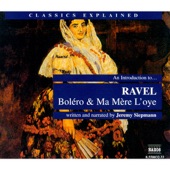2
Imagery, Analogy and the Shape of the Things to Come - The Opening Flourish
3
The Unusual Presence of the Double-Bass
4
A Palette of Tone Colours and the Emergence of a Theme
5
Trouble Getting Off the Ground, But the Key Is Not In Doubt
6
Jumping the Queue: Schubert Takes a Lesson from Mozart
7
Mozart Demonstrates a Traditional Transition
9
Mozart Confirms Our Arrival
10
A Schubertian Shocker from a Later Work
11
Rejoining the "Trout", With a Reminder
12
The Piano Joins the Strings With Yet a Third Variant of the Theme
13
A Rhythmic Motto: The "Ttriplet Motif"
16
We Find It Everywhere, Even In the Double-Bass
17
The Strings' Answer to the Piano's Opening Flourish
18
The Two-Part Structure of the "Answering Motif"...
19
...But Scarcely Ever the Same Way Twice
20
The Piano and Strings Now Share the Material for the First Time
21
Conversation As the First Principle of Chamber Music
22
Opening (Introductory) Section Heard Complete
23
The Violin and Double-Bass In Partnership
24
The Violin and Piano Swap Roles
25
Transition to Second Main Theme - Triplets Now Everywhere
26
On the Threshold of the New Theme
27
Second Main Theme (A "Love Duet"), Shared By Cello and Viola
28
The Abandonment of Octaves In the Piano Changes the Tone Colour
29
A Surprising Change of Tone and a Premonition
30
A Return to Lyricism, But the Cello Jumps the Gun
31
A Buoyant, Skipping New Theme Is Given to the Solo Piano
32
Re-entry of the Strings As the Violin Takes Up the New Theme
33
A Transitional Theme, and Another Schubertian Key-Jump
34
We Sense the Imminent Arrival of the Closing Theme
35
A Sudden, Hushed Key-Cchange Introduces Part Two of the Closing Theme
36
The Exposition Comes to an End
37
Cue to Complete Exposition
38
Music: Exposition Complete
39
Introduction to the Development - The Genetic Code of "Key"
40
The Contrasting Aural Properties of Piano and Violin
41
The Ponderous Double-Bass Is Featured In the First Main Theme
42
The Strings Are Liberated from Servitude, But Are a Long Way from Home
43
A Joyful Conversation and a Change of Pace In the Piano
44
The Piano Takes the Melodic Lead Again
45
A Conversation Between Violin and Piano Leads to the Exposition...
46
...But Schubert Gets It "Wrong"
47
Music: First Movement (Complete)
48
Introduction to Second Movement
49
The Violin Now Takes Theme One
50
The Piano Regains the Theme
51
The Violin and Piano Round Off First Section With the New "Closing" Theme
52
A Major Change of Tone: A Passing Cloud and a Dark New Key
53
The Piano Abandons Its Octaves, But Not Its Triplets, In the New "Hungarian" Theme
54
The Sun Returns With a New Theme, In Two Contrasting Parts
55
An Evaporating Dialogue Between Violin and Piano
56
A Major Mood Change As Twilight Falls
58
Music: Second Movement (Complete)
59
Introduction to the Scherzo - And a Clear Four-Bar Phrase...
60
..."Answered" By Two Two-Bar Phrases
62
Expectation, Frustration and Surprise
63
The Phrase Length Exands from Nine to Fourteen Bars
64
The Beginning of the Second Half...
65
...Or Should It Go from G Minor to D Major?
66
Doubts Are Sown As the Tonality Becomes Elusive
67
A Varied Reprise of Part One, and the End of the Scherzo Proper
68
A Conversational Start to the Trio Section
69
Another Schubertian Phrase Extension
70
Two Overlapping Phrases Add Up to a Single Theme
71
The Piano Adds a Third Phrase to the Overlap
72
The Overlaps Continue As the Key Drifts Downwads
73
Another Schubertian Key-Jump, Now to B Flat
74
A Dramatic Transformation of Mood
75
Awakening from a Dream: The Main Theme's Return
77
Music: Third Movement (Complete)
78
Enter the Trout, At Last - A Meeting With the Original
80
Back to the Quintet: The Strings, Headed By the Violin, Introduce the Theme
84
The Fourth Variation, Part One
85
The Fourth Variation, Part Two
87
The Final Variation, Part One: Violin and Piano Alone Introduce the Theme
88
The Final Variation, Part Two: The Cello Takes the Tune
89
The Final Variation, Part Three: Piano and Violin Return As a Duo...
90
The Final Variation, Part Four: ...As Do the Viola and Cello
91
The Final Variation, Part Five: The Entire Ensemble Is Reunited
92
Music: Fourth Movement (Complete)
93
Introduction to the Finale: Schubert As Wizard of Repetition
94
Easily Overlooked: The Accompaniment from Cello and Double-Bass
95
Contrasts of Timbre and Register
96
A Repetition, and Yet Not a Repetition
97
A Journey Begun - The Phenomenon of Musical Gravity
99
The Source of Musical Gravity
100
Music: St. Saens - The Carnival of the Animals "The Pianists"
101
A Scale of Shifting Tensions
102
Music: Beethoven, Symphony No. 1 (Finale)
104
The Piano Embellishes a Scalewise Descent
106
Repetition More Apparent Then Real
108
Shifting Patterns of Accentuation
110
An Increasingly Sophisticated Texture As Parts Interact
112
A Repetition from the Strings...
113
...And an Answer from the Piano
114
In Transition to the Secondary Key
115
The Origin of the Second Theme
117
The Closing Section Begins, With a Question Answered
118
The Question Repeated, a Slightly Differnet Answer
119
First Theme of Closing Section Reviewed
120
Remembrance of Things Past
121
The Piano and Strings Argue Over the Harmony
122
Emergence of the Final Theme
123
An Unexpected Thunderstorm


